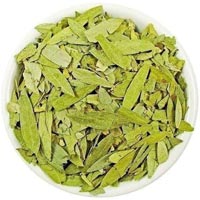
Regimental therapy (Ilaj- bil- tadbeer/Hijama) is one of the most popular methods of treatment, practiced by ancient Unani scholars since antiquity. It is basically application of certain special techniques or physical methods of treatment to improve the constitution of body by removing waste materials and improving the defence mechanism of the body.
In other words, regimental therapies (Ilaj-bil- tadbeer/Hijama) are mostly non medicinal techniques or procedures by which Unani physicians modulate the patient’s habitat, life style and dietary habits of the patient. They practice some other therapeutic regimens for the treatment of various diseases.
Literally “Tadbeer” is Arabic word which means “regimen” or “systemic plan” whereas “Ilaj” means “therapy” or “treatment”. Thus, “Ilaj-bil- tadbeer” means treatment through special regimen. It is a method, through which maintenance of general health and care of the sick person is attained through modulation or modification in Asbaab-e- sitta zarooriya (six essential factors for life).
Moalijat-e- Khususi is the old nomenclature of Ilaj-bil- tadbeer, suggested by Central Council of Indian Medicine, New Delhi. Ilaj- bil- tadbeer is similar to “Panchkarma” in Ayurveda.
These regimes are actually meant for the Istifraagh-e- akhlaat-e- radiya (evacuation of morbid humours) from the body. These morbid humours are true culprits which are basically responsible for the onset of disease. As soon as these morbid humours are removed from the body by applying some regimens, normal health gets restored.
Fasd (Blood-letting/venesection), Ta’areeq (leech therapy) and Hijama (cupping) are essential parts of regimental therapy. It has been utilized for preventive as well as therapeutic purposes since thousands of years by ancient Unani physicians.
Among four prescribed modes of treatment of Unani system, regimental therapy is one of them, which has played significant role in maintaining human health.
Ibn-e- Sina, an eminent Unani scholar wrote in his famous book “Canon of Medicine”, that there are almost 36 regimens. Some examples of these regimens include, Fasd (Venesection), Hijama (Cupping), Idraar-e- baul (Diauresis), Ta’areeq (Sweating), Ishaal (Purgation), Hamam (Turkish bath), Dalak (Massage), Kai (Cauterization), Qai (Emesis), Riyaazat (Exercise), Ta’leeq (Leeching), Huqna (Enema), Inkebaab (Inhalation), Tanfees (Expectoration), Eilam (Counter Irritation), and Aabzan (Hydration Therapy).
Due to their negligible side effects and environment friendly nature, even developed countries are also emphasising the use of regimental therapies (Ilaj- bil-tadbeer) prescribed by Unani physicians thousands year back as special regimens to treat the diseases as well as to maintain the body in good health.
References:
http://www.indianmedicine.nic.in/index4.asp?ssslid=137&subsubsublinkid=9&lang=1
http://www.ccrum.net/?s=regimental+therapy
http://www.tkdl.res.in/tkdl/LangDefault/Unani/Una_Regimental.asp
https://india.gov.in/gsearch?s=unani&op.x=0&op.y=0&op=Search
http://www.ccimindia.org/unani.html
http://jamiahamdard.edu/faculty-of-medicine/#
http://www.nium.in/facilities.php
http://www.ncbi.nlm.nih.gov/pmc/articles/PMC3377041/


